Meet our academic staff
Dr John Connelly, Programme Co-Director
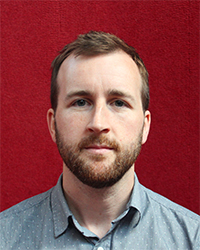 Dr John Connelly is the Programme Co-Director and is a Reader in Bioengineering with interest in how keratinocytes sense and respond to changes in their physical microenvironment. He leads an interdisciplinary research group in skin biomechanics and mechano-sensing. His research group employ engineered materials and model systems to precisely control the signals presented to cells. He is involved in key projects such as the role of biophysical cues in epidermal fate decisions, the influence of substrate mechanics and topography on wound healing, and transcriptional regulators of mechano-transduction in keratinocytes. His group also has an ongoing interest in tissue engineering and regenerative medicine, and a long-term goal is to translate findings into effective strategies for skin repair. Dr Connelly helped to set up and manage the CRoss-InstitutE Advanced Tissue Engineering (CREATE) Lab, a cross-faculty initiative dedicated to development of next-generation 3D tissues and disease models for use in biomedical research and regenerative medicine and promoting cutting-edge interdisciplinary research. He is also an academic member of Queen Mary’s new Centre for Predictive in vitro Models (CPM), which represents multidisciplinary research focusing on the development and use of predictive in vitro models and next generation engineered tissues.
Dr John Connelly is the Programme Co-Director and is a Reader in Bioengineering with interest in how keratinocytes sense and respond to changes in their physical microenvironment. He leads an interdisciplinary research group in skin biomechanics and mechano-sensing. His research group employ engineered materials and model systems to precisely control the signals presented to cells. He is involved in key projects such as the role of biophysical cues in epidermal fate decisions, the influence of substrate mechanics and topography on wound healing, and transcriptional regulators of mechano-transduction in keratinocytes. His group also has an ongoing interest in tissue engineering and regenerative medicine, and a long-term goal is to translate findings into effective strategies for skin repair. Dr Connelly helped to set up and manage the CRoss-InstitutE Advanced Tissue Engineering (CREATE) Lab, a cross-faculty initiative dedicated to development of next-generation 3D tissues and disease models for use in biomedical research and regenerative medicine and promoting cutting-edge interdisciplinary research. He is also an academic member of Queen Mary’s new Centre for Predictive in vitro Models (CPM), which represents multidisciplinary research focusing on the development and use of predictive in vitro models and next generation engineered tissues.
Dr Matthew Caley
Dr Matthew Caley is the programme co-director with an interest in the basement membrane zone (BMZ). Present in all epithelia, it plays an important role in maintaining normal tissue homeostasis. It does this not only through offering structural support for cells but also by signalling through cell surface receptors. Components of the BMZ include collagens IV, VII and XVII as well as laminin 332. Matthew received his PhD in Biological Sciences from Cardiff University in 2008 studying Chronic Wounds under the supervision of Prof. Phil Stephens. He then moved to Imperial College London joining the laboratory of Dr Justin Sturge and Prof. Jonathan Waxman to study prostate cancer metastasis and the role the extracellular matrix plays in controlling cell behaviour. In 2011, he moved to the Blizard Institute returning to skin research in the laboratory of Prof. Edel O’Toole. His research has focussed on the skin basement membrane and investigating its role in healthy and damaged skin as well as in skin cancer. In 2019 Matthew was appointed as a Lecturer in Cell Biology.
Dr Emanuel Rognoni
Dr Emanuel Rognoni is the programme co-director whose lab is combining genome-wide screening, proteomics, in silico analysis, in vivo imaging, lineage tracing of dermal cells with multiple cell biology techniques. The goal is to elucidate the fundamental biology defining fibroblast identity and plasticity during development, regeneration and disease paving the way for new treatment strategies targeting pathological fibroblast behaviour in skin diseases and potentially other organs. He is a Biochemist by training first joined the Centre of Endocrinology as a lecturer in 2019 and then moved to the Centre for Cell Biology and Cutaneous Research at the Blizard Institute in 2022.
Our teaching staff
Dr Cleo Bishop
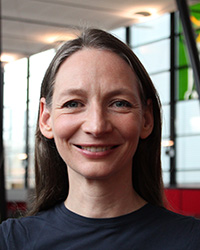 Dr Cleo Bishop leads the Cell and Molecular Basis of Regeneration module. She is a Reader in Senescence and her research focuses on targeting cellular senescence as a strategy for promoting healthy ageing, and illuminating the fundamental mechanisms that regulate senescence programmes to further our understanding of how cells sense early carcinogenic events, and the interplay between cancer progression, healthy ageing and cellular rejuvenation. She established our Phenotypic Screening facility, and has used this technology to discover novel regulators of the ageing and senescence biomarker, p16. She is also Director of Graduate Studies at the Blizard Institute.
Dr Cleo Bishop leads the Cell and Molecular Basis of Regeneration module. She is a Reader in Senescence and her research focuses on targeting cellular senescence as a strategy for promoting healthy ageing, and illuminating the fundamental mechanisms that regulate senescence programmes to further our understanding of how cells sense early carcinogenic events, and the interplay between cancer progression, healthy ageing and cellular rejuvenation. She established our Phenotypic Screening facility, and has used this technology to discover novel regulators of the ageing and senescence biomarker, p16. She is also Director of Graduate Studies at the Blizard Institute.
Dr Jürgen Groet
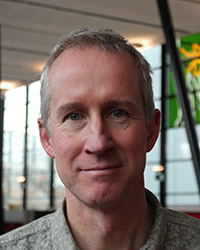 Dr Jürgen Groet is the module lead for Induced Pluripotent Stem Cells (iPSC) and Genome Engineering. His main interest is in studying Down syndrome (DS) using iPSC models, where he used iPSC clones which are differentiated into different cell types to perform research on phenotypes of DS. Special DS phenotypes of interest are: leukaemia, Alzheimer’s Disease, and neuronal malformations. He is also Director of Academic Development and Head of Intercalated Degrees at the Blizard Institute.
Dr Jürgen Groet is the module lead for Induced Pluripotent Stem Cells (iPSC) and Genome Engineering. His main interest is in studying Down syndrome (DS) using iPSC models, where he used iPSC clones which are differentiated into different cell types to perform research on phenotypes of DS. Special DS phenotypes of interest are: leukaemia, Alzheimer’s Disease, and neuronal malformations. He is also Director of Academic Development and Head of Intercalated Degrees at the Blizard Institute.
Dr Tina Chowdhury
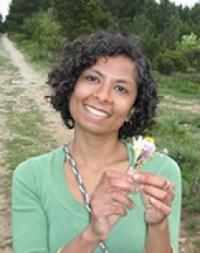 Dr Tina Chowdhury is a Senior Lecturer in Regenerative Medicine at the School of Engineering and Materials Science. Her research in regenerative medicine aims to identify therapeutics that slow down inflammation and repair tissues in a variety of models. She has been highly successful in identifying new molecules and mechanisms that cause osteoarthritis. She has also been awarded several prizes and project grants in developing teaching innovations. For example, she created the virtual lab, which is an e-learning tool used by students to learn interdisciplinary techniques in cell biology and bioengineering.
Dr Tina Chowdhury is a Senior Lecturer in Regenerative Medicine at the School of Engineering and Materials Science. Her research in regenerative medicine aims to identify therapeutics that slow down inflammation and repair tissues in a variety of models. She has been highly successful in identifying new molecules and mechanisms that cause osteoarthritis. She has also been awarded several prizes and project grants in developing teaching innovations. For example, she created the virtual lab, which is an e-learning tool used by students to learn interdisciplinary techniques in cell biology and bioengineering.
Dr Daniele Bergamaschi

Dr Ping Yip
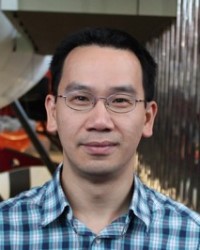 Dr Ping Yip is a non-clinical lecturer who leads the Neurodegenerative Diseases module. His research group focuses on neuroregeneration, neuroplasticity, neuroprotection, neurodegeneration and neuroinflammation in neuroinjury. He has a substantially wide in vitro and in vivo technical knowledge and abilities, which enabled him to publish research articles in the field of pain, motor neurone disease, spinal cord injury, traumatic brain injury and newborns with hypoxic-ischemic encephalopathy.
Dr Ping Yip is a non-clinical lecturer who leads the Neurodegenerative Diseases module. His research group focuses on neuroregeneration, neuroplasticity, neuroprotection, neurodegeneration and neuroinflammation in neuroinjury. He has a substantially wide in vitro and in vivo technical knowledge and abilities, which enabled him to publish research articles in the field of pain, motor neurone disease, spinal cord injury, traumatic brain injury and newborns with hypoxic-ischemic encephalopathy.
Professor David Lee
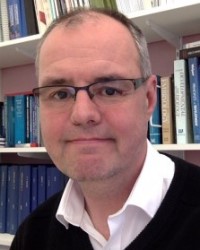 Professor David Lee is a professor of cell and tissue engineering at the School of Engineering and Materials Science and co-delivers the Medical Ethics and Regulatory Affairs module along with Elizabeth Tanner. He is also Deputy Vice-Principal for Research (Enterprise).
Professor David Lee is a professor of cell and tissue engineering at the School of Engineering and Materials Science and co-delivers the Medical Ethics and Regulatory Affairs module along with Elizabeth Tanner. He is also Deputy Vice-Principal for Research (Enterprise).
Dr Miguel Branco
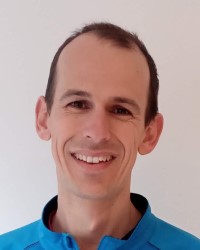 Dr Miguel Branco delivers the Stem Cell and Developmental Biology module. His group is interested in the epigenetic regulation of transposable elements and its impact on genome function. His lab uses epigenomic approaches and molecular biology tools to investigate the epigenetic mechanisms involved in transposon biology with the aims to elucidate the functional roles that transposable elements play in the contexts of development, health and disease.
Dr Miguel Branco delivers the Stem Cell and Developmental Biology module. His group is interested in the epigenetic regulation of transposable elements and its impact on genome function. His lab uses epigenomic approaches and molecular biology tools to investigate the epigenetic mechanisms involved in transposon biology with the aims to elucidate the functional roles that transposable elements play in the contexts of development, health and disease.
Dr Matthew Caley
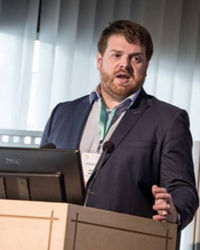 Dr Matthew Caley delivers the Tissue-specific Stem Cells module. His research projects include repairing the skin barrier in Junctional Epidermolysis Bullosa, the role of the Laminin 332-Actin-Cholesterol axis in skin conditions with altered lipid profiles, and how the loss of Laminin 332 affects the tumour microenvironment.
Dr Matthew Caley delivers the Tissue-specific Stem Cells module. His research projects include repairing the skin barrier in Junctional Epidermolysis Bullosa, the role of the Laminin 332-Actin-Cholesterol axis in skin conditions with altered lipid profiles, and how the loss of Laminin 332 affects the tumour microenvironment.